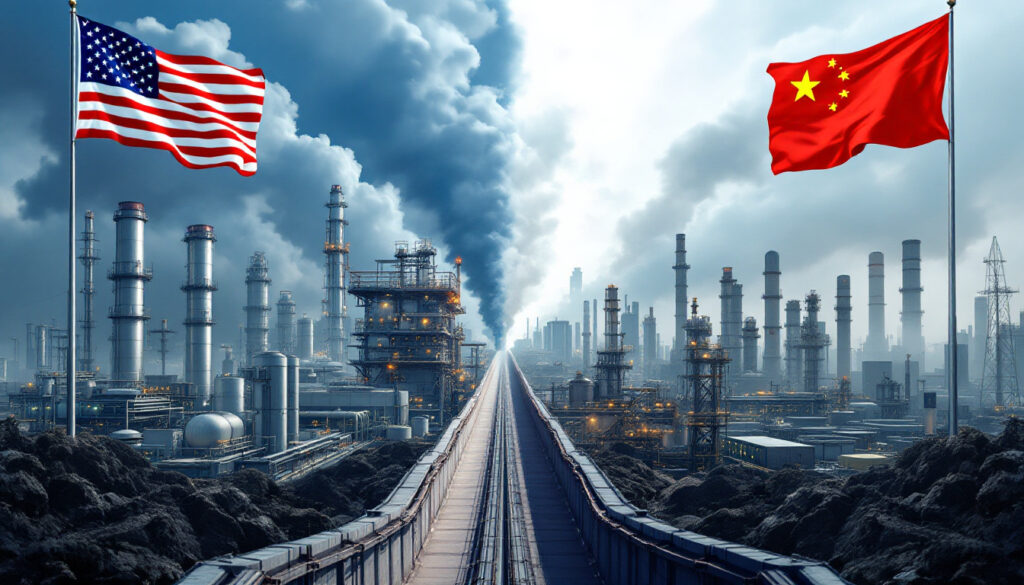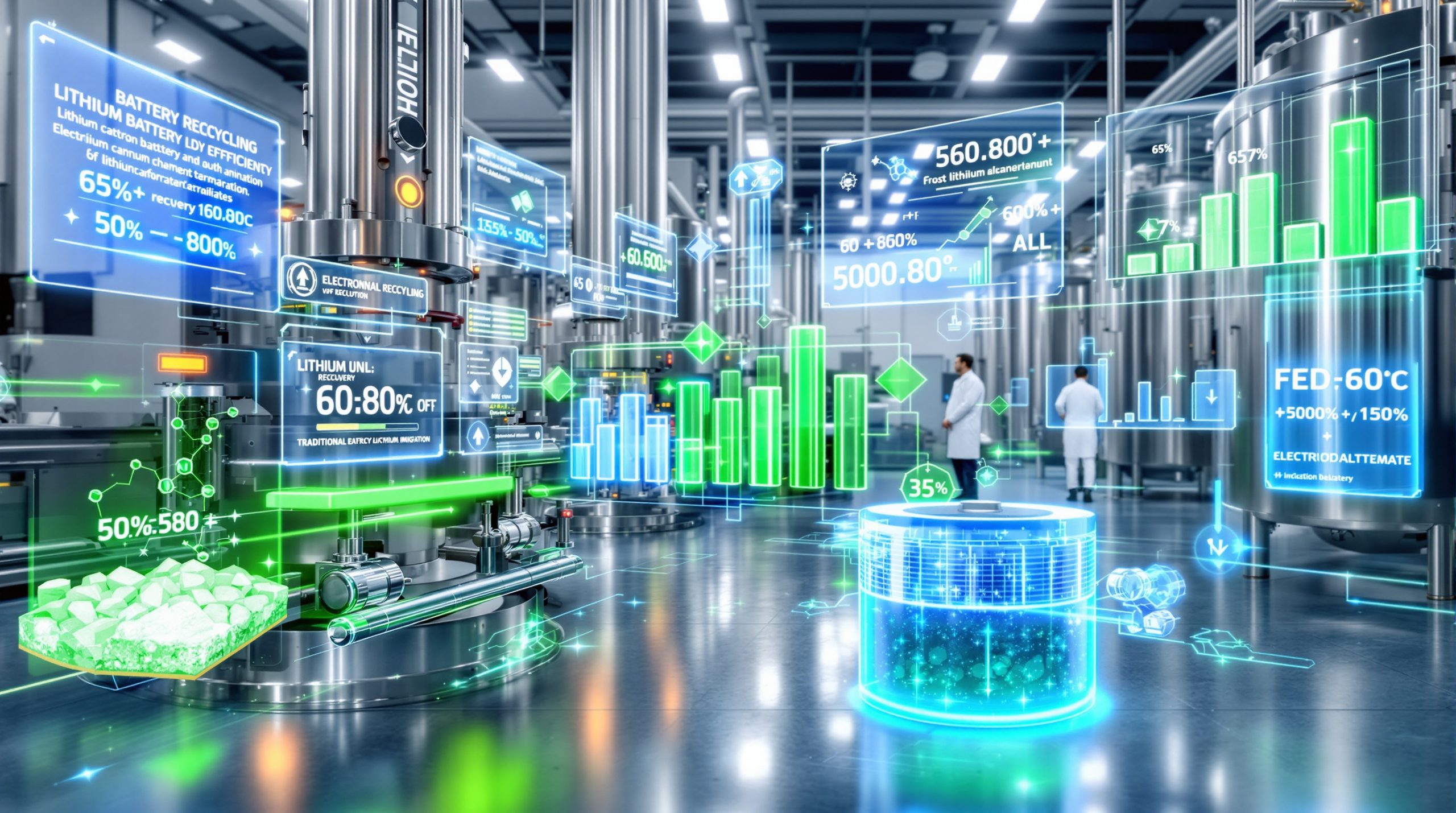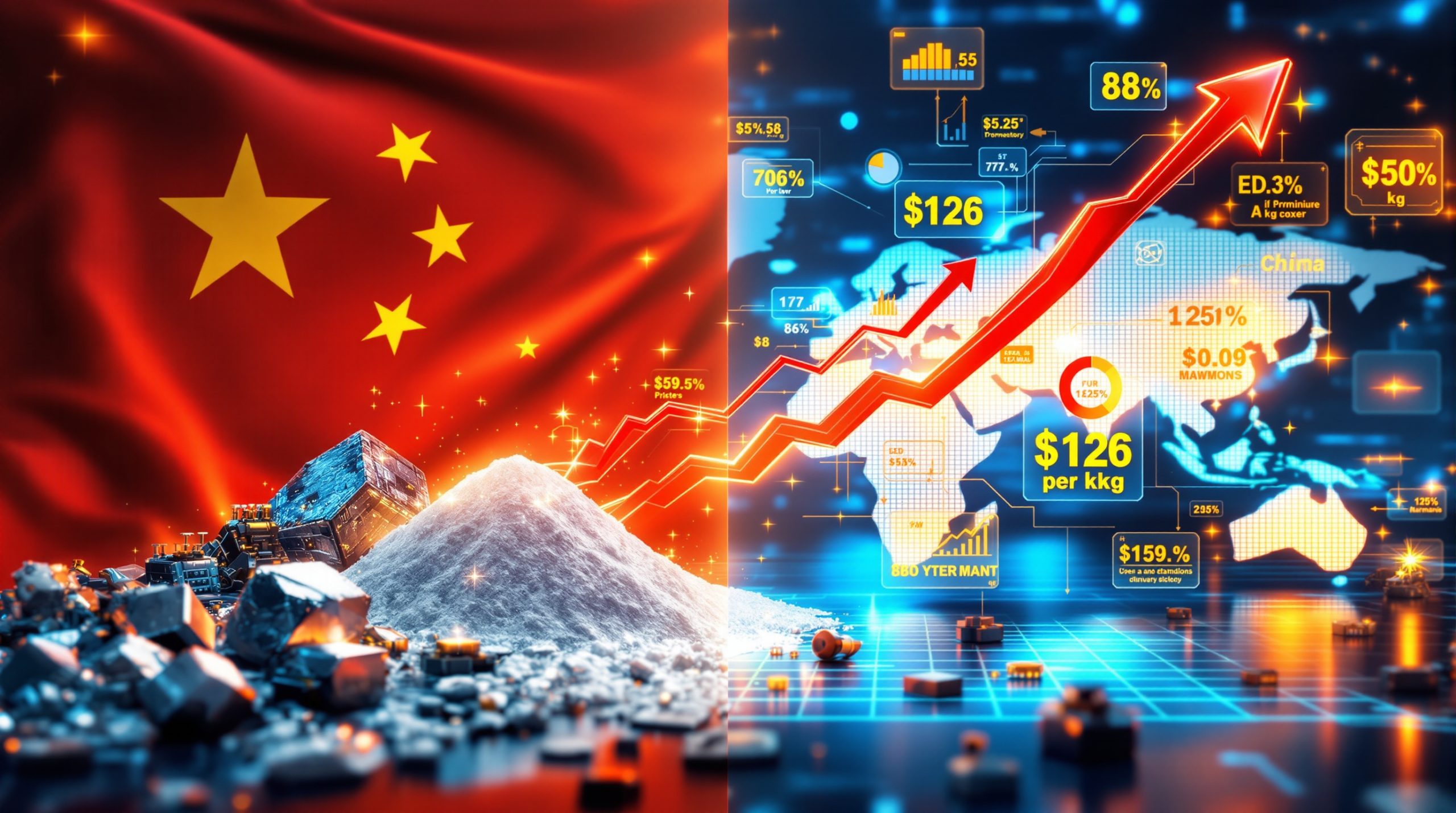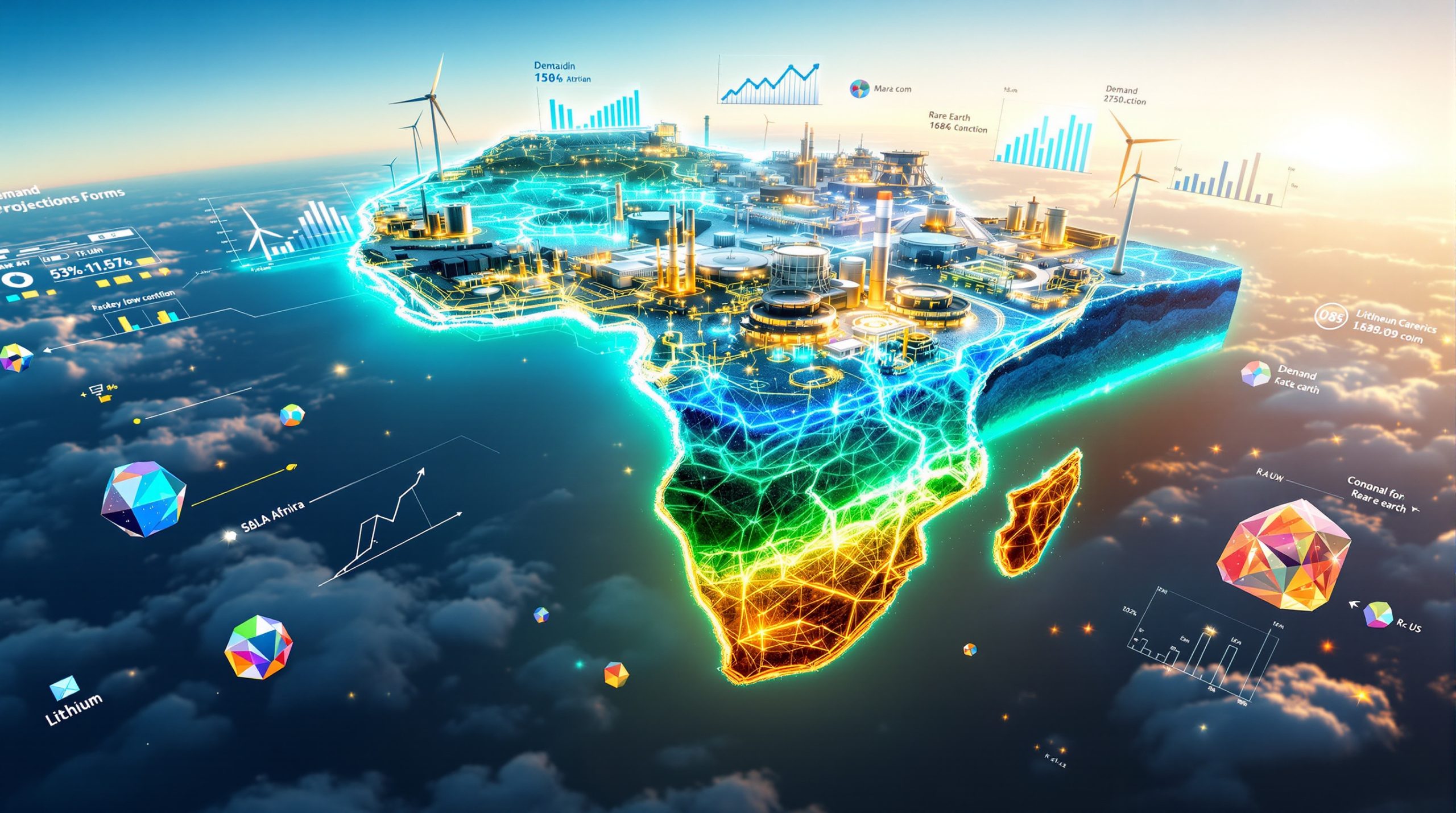What Are the New US Graphite Tariffs Against China?
The US Department of Commerce (DoC) has made a preliminary determination to impose countervailing duty (CVD) tariffs of up to 721% on synthetic and natural graphite anode material imported from China. This represents a dramatic increase from the existing 25% tariff, which industry stakeholders have argued is insufficient to counter Chinese market dominance in the global graphite supply chain.
The DoC's final determinations for both the CVD investigation and a separate anti-dumping duty (AD) investigation are expected in early December 2025. If approved, these combined tariffs impact investment markets by fundamentally reshaping global supply chains for this critical battery material.
Understanding the Scale of Proposed Tariff Increases
The proposed 721% CVD tariffs mark one of the most aggressive trade actions taken by the US against Chinese critical minerals to date. According to the DoC's preliminary determination (May 2025), these tariffs aim to counteract what the US government views as unfair subsidization of Chinese graphite producers.
"This decision is an important step in supporting the US goal of developing critical mineral supply domestically for increased energy independence," noted Michael O'Kronley, Novonix CEO, in response to the announcement.
The existing 25% tariff, implemented during previous trade actions, has been deemed "far too low" by the North American Graphite Alliance (NAGA), as Chinese producers can easily absorb this cost while maintaining their competitive advantage. Industry analysts suggest China currently controls approximately 65% of global natural graphite production and a staggering 90% of graphite anode material used in EV batteries.
Timeline for Implementation
The implementation timeline for these tariffs follows a structured regulatory process:
- May 2025: Preliminary CVD determination (721%)
- August 2025: Expected preliminary anti-dumping duty determination
- December 2025: Final determinations for both CVD and AD investigations
- January 2026: If approved, full implementation of combined tariffs
This phased approach gives supply chains some time to adapt, though industry experts warn of potential short-term disruptions as manufacturers scramble to secure non-Chinese sources of this critical battery material.
Why Is Novonix Supporting These Tariff Increases?
As a member of the North American Graphite Alliance, Novonix (ASX: NVX) has publicly endorsed the DoC's preliminary determination, positioning itself as a key beneficiary of reduced Chinese competition in the US market for battery-grade graphite materials.
Novonix's Strategic Position
Novonix stands to benefit significantly from these tariff increases due to its strategic investments in US-based production facilities. The company is developing North America's first large-scale production site dedicated to high-performance synthetic graphite for the battery sector through its Riverside facility.
With production targets of 20,000 tonnes per annum initially and plans to scale to over 50,000 tonnes per annum, Novonix is positioning itself as a domestic alternative to Chinese imports. This capacity expansion is supported by the company's acquisition of a 182-acre parcel in the Enterprise South Industrial Park in Chattanooga, Tennessee.
The cost differential between US and Chinese production has been a major hurdle for companies like Novonix. According to the U.S. Department of Commerce announcement, synthetic graphite production costs in China average around $5,000 per tonne, compared to $7,500 per tonne in the US—a 50% premium that makes competition difficult without tariff protection.
Alignment with US Energy Security Goals
Novonix's support for these tariffs aligns perfectly with broader US strategic objectives to reduce dependency on Chinese supply chains for critical minerals and energy security. The Inflation Reduction Act and Bipartisan Infrastructure Law have both prioritized domestic production of battery materials, with specific provisions targeting critical minerals like graphite.
The company's synthetic graphite production technology offers several advantages over natural graphite, including more consistent quality and performance characteristics critical for high-performance batteries. This positions Novonix to capitalize on both policy support and technological differentiation in a rapidly evolving market.
How Has China Dominated the Global Graphite Market?
China's dominance in the global graphite market represents one of the most complete supply chain monopolies in the critical minerals sector, with implications that extend far beyond simple market competition.
Evidence of Market Suppression
In February 2025, the International Trade Commission made a significant determination that China had systematically suppressed the establishment of a domestic graphite industry in the US and other countries. This was achieved through exporting artificially cheap graphite, creating barriers to entry for potential competitors in Western markets.
The investigation found that state subsidies enable Chinese producers to sell below production costs, with some facilities operating at negative margins for extended periods to maintain market share. This strategy has effectively prevented the development of alternative supply chains outside China, despite growing demand from the EV and energy storage sectors.
A case in point is Syrah Resources' Vidalia facility in Louisiana, which faced significant delays and financial challenges due to Chinese competition, according to the company's ASX announcements in 2023. This example illustrates how US–China trade tensions have directly impacted Western efforts to establish alternative supply chains.
Economic Impact of Chinese Pricing Strategies
The economic impact of China's graphite dominance extends beyond simple price competition:
- Supply chain vulnerability: 90% of global graphite anode supply being controlled by one country creates significant geopolitical risks
- Innovation suppression: Limited investment in alternative technologies due to artificially low Chinese pricing
- Environmental arbitrage: China's graphite production has been linked to higher carbon emissions and fewer environmental controls than would be required in Western facilities
According to NAGA members, the existing 25% tariff on Chinese graphite has proven "far too low" and can be easily absorbed by Chinese producers while still maintaining their competitive advantage. This has effectively prevented the development of alternative supply chains outside China, despite growing demand from the battery sector.
What Is the North American Graphite Alliance?
The North American Graphite Alliance represents a coordinated industry response to China's dominance in the graphite supply chain, bringing together key stakeholders in the North American battery materials sector.
Formation and Membership
NAGA includes Novonix among its four members who filed the initial trade case as the American Active Anode Material Producers. While the full membership list hasn't been publicly disclosed, industry analysts identify other likely members as including Syrah Resources (through its Vidalia facility), Westwater Resources, and Graphite One.
The alliance was formed specifically to advocate for stronger trade measures against Chinese graphite imports, with its members collectively representing the nascent North American graphite processing industry. These companies have invested hundreds of millions of dollars in developing domestic capacity, only to face persistent challenges from subsidized Chinese competition.
NAGA has also played an instrumental role in shaping policy frameworks, including aspects of the Inflation Reduction Act's critical minerals provisions that prioritize domestic and allied nation sourcing of battery materials.
Strategic Objectives
NAGA's primary goal is to establish a robust domestic graphite supply chain in North America, reducing dependency on Chinese imports for this critical battery material. The alliance has argued that without significant tariff protection, domestic producers cannot compete with artificially low-priced Chinese materials.
Beyond tariffs, NAGA advocates for:
- Grant funding: Supporting domestic graphite projects through Department of Energy grants under the Bipartisan Infrastructure Law
- Tax incentives: Expanding production tax credits for critical minerals
- R&D support: Increased funding for advanced graphite processing technologies
- Workforce development: Programs to train skilled workers for the specialized manufacturing processes required
The alliance's approach represents a model for how industry cooperation can influence trade policy while also addressing broader national security and economic development objectives.
How Is Novonix Expanding Its US Production Capacity?
Novonix's expansion strategy represents one of the most ambitious attempts to establish domestic graphite production capacity in the United States, with significant investments across multiple facilities.
Riverside Facility Development
Novonix's Riverside facility is positioned to become North America's first large-scale production site dedicated to high-performance synthetic graphite for the battery sector. This facility represents a critical component of the company's strategy to capitalize on growing domestic demand.
The Riverside facility employs specialized "purification furnace" technology to reduce impurities in synthetic graphite to levels required for high-performance battery applications. This technical capability is critical for producing anode materials that can compete with Chinese imports on quality, if not yet on price without tariffs and economic impact.
Production at Riverside is being designed to meet the stringent specifications of tier-one battery manufacturers, with particular attention to consistency, purity, and performance characteristics that affect battery life and charging speed.
Enterprise South Industrial Park Expansion
The company has secured a 182-acre parcel in the Enterprise South Industrial Park in Chattanooga, Tennessee, to further expand its production capabilities. This strategic acquisition demonstrates Novonix backs US push for steep graphite tariffs against China in global supply chain crackdown by scaling operations in response to anticipated market changes following tariff implementation.
The Tennessee facility benefits from:
- Strategic location: Proximity to emerging battery manufacturing hubs in the southeastern US
- Energy infrastructure: Access to Tennessee Valley Authority power, with options for renewable energy sourcing
- Transportation networks: Well-developed logistics for both raw material receipt and finished product distribution
- Workforce development: Partnerships with local universities and technical colleges to develop skilled labor
According to Novonix's sustainability report (2024), the company has committed to powering a significant portion of its Tennessee operations with renewable energy, aligning with automakers' increasing demands for low-carbon battery materials.
Production Capacity Targets
By combining the initial capacity at Enterprise South with the Riverside facility, Novonix aims to scale its graphite production to up to 20,000 tonnes per annum initially, with plans to create total production capacity exceeding 50,000 tonnes per annum. These expansion efforts position the company to capitalize on the expected shift in market dynamics following tariff implementation.
To put these numbers in context, a typical electric vehicle requires approximately 50-70 kg of graphite anode material, meaning Novonix's planned capacity could eventually supply material for around 1 million EVs annually—a significant portion of projected US EV production by 2030.
What Are the Broader Implications for Global Battery Supply Chains?
The implementation of these tariffs will have far-reaching consequences beyond just the graphite market, potentially reshaping global battery supply chains and the broader energy transition.
Impact on EV Manufacturing Costs
The implementation of steep tariffs on Chinese graphite will likely increase costs for battery manufacturers and, by extension, electric vehicle producers in the short term. Industry analysts project a 5-8% increase in battery prices, potentially adding $500-800 to the price of an average electric vehicle.
This cost impact creates a challenging dynamic for automakers who are simultaneously trying to:
- Reduce EV prices to accelerate mass-market adoption
- Comply with increasing domestic content requirements for tax credit eligibility
- Secure reliable supply chains for critical materials
- Meet carbon reduction targets throughout their supply chains
A study by the MIT Energy Initiative (2024) suggests that these higher costs may slow EV adoption by 5-10% in the near term, though this effect could be offset by production tax credits and other incentives designed to support domestic battery manufacturing.
Acceleration of Supply Chain Diversification
These tariffs are expected to accelerate the diversification of graphite supply chains, with increased investment in production facilities outside China. Countries with significant graphite resources, including Australia, Canada, and Brazil, may see renewed interest in developing their deposits.
Tesla, for example, has already begun shifting some of its graphite sourcing to Canadian supplier Nouveau Monde, according to the company's Q1 2025 earnings call. This represents a broader trend of proactive supply chain diversification among leading manufacturers.
The Australian Critical Minerals Strategy (2024) specifically identifies graphite as a priority material, with several projects under development that could serve as alternatives to Chinese supply. These include established mining operations being paired with new processing facilities designed to produce battery-grade materials.
Timeline for Supply Chain Adjustment
Industry analysts from BloombergNEF suggest that a 2-3 year transition period will be necessary for non-Chinese suppliers to scale production sufficiently to meet demand. During this period, battery manufacturers may face supply constraints and higher input costs.
This transition timeline is based on several factors:
- Capital investment cycles: 18-24 months for new processing facilities
- Qualification processes: 6-12 months for battery manufacturers to validate new suppliers
- Scale-up challenges: Gradual ramp-up of production to commercial volumes
- Technical optimization: Time needed to match Chinese quality and consistency standards
The transition may be accelerated by government support through the Bipartisan Infrastructure Law and Defense Production Act, which have allocated billions for critical minerals supply chain development.
FAQ: US Graphite Tariffs and Market Impact
How will these tariffs affect battery prices for consumers?
The implementation of steep tariffs on Chinese graphite could initially increase battery costs by an estimated 5-8%, potentially adding $500-800 to the price of an average electric vehicle. However, as domestic and allied nation production scales up, these price impacts are expected to moderate over a 3-5 year period.
The MIT Energy Initiative's 2024 study on EV affordability suggests that federal tax credits may offset much of this increase for qualifying vehicles, though the impact will be greater for vehicles that don't meet domestic content requirements.
Which companies besides Novonix stand to benefit from these tariffs?
Other North American graphite producers and developers positioned to benefit include:
- Syrah Resources (through its Vidalia facility in Louisiana)
- Westwater Resources (developing the Coosa Graphite Project in Alabama)
- Graphite One (advancing the Graphite Creek deposit in Alaska)
- Northern Graphite (operating the Lac-des-Îles mine in Quebec)
European producers such as Talga Group and Nouveau Monde Graphite may also see increased interest from US battery manufacturers seeking tariff-free supply through free trade agreements.
Could China retaliate with counter-tariffs on US exports?
Historical patterns suggest China may implement reciprocal measures targeting US exports in strategic sectors. The 2018-2020 trade war saw China impose tariffs on US agricultural exports, particularly soybeans and corn, causing significant market disruption.
In 2025, China's Ministry of Commerce has already implemented targeted tariffs on US rare earth magnets, suggesting a pattern of strategic retaliation in the critical minerals sector. Potential targets for future action include:
- Agricultural products (particularly soybeans, corn, and pork)
- Aerospace components
- Semiconductor equipment
- Specialized manufacturing equipment
- Energy products like LNG
These retaliatory measures could create additional trade tensions between the two economic powers, potentially spilling over into other sectors.
How do these tariffs align with climate goals and the energy transition?
While the tariffs support supply chain security objectives, they create a potential tension with climate goals by potentially increasing EV costs in the short term. Policymakers will need to balance these competing priorities through additional incentives or support mechanisms for domestic battery production.
Wood Mackenzie analysts characterize this dynamic as "short-term pain for long-term supply chain resilience," noting that a more diversified and resilient supply chain will ultimately support faster electrification by reducing geopolitical risks.
Environmental considerations also factor into this equation:
- Chinese graphite production typically has a higher carbon footprint due to coal-powered electricity
- New Western facilities are more likely to incorporate renewable energy and more stringent environmental controls
- Shorter supply chains reduce transportation emissions
Over the long term, a more diversified and environmentally responsible graphite supply chain may better serve climate goals, despite near-term cost increases.
Disclaimer: This analysis contains forward-looking statements about market impacts and company performance. Actual outcomes may differ based on policy implementation, market responses, and other factors. Readers should conduct their own research before making investment decisions.
Ready to Capture the Next Mineral Discovery Opportunity?
Discover how real-time alerts on significant ASX mineral discoveries can give you an investment edge with Discovery Alert's proprietary Discovery IQ model, turning complex mineral data into actionable insights. Understand why historic discoveries can generate substantial returns by visiting Discovery Alert's dedicated discoveries page and begin your 30-day free trial today.




